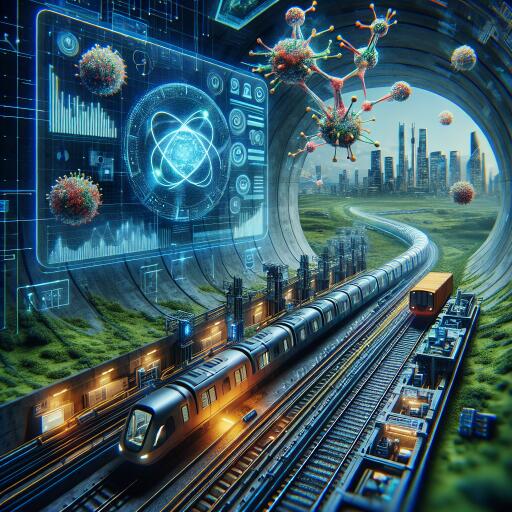Revolutionizing Subway Transportation: A Leap Towards Predicting Environmental Vibrations with Machine Learning and Database Technologies
In the bustling world of urban transportation, subways play a pivotal role in ferrying millions of passengers daily. However, the smooth operation of these underground arteries is often challenged by vibrations caused by the interaction between the subway trains and the tracks. Traditionally, predicting the environmental impact of these vibrations has been a complex task, fraught with limitations in accuracy, computational speed, and applicability.
Addressing this challenge, a groundbreaking study has emerged, employing database theory and sophisticated machine learning algorithms to predict subway transportation environment vibrations with unprecedented accuracy. The fruits of this research are promising, showcasing an average prediction deviation of merely 1.4 dB from actual measurements. What’s more, the predictions demonstrate a maximal error margin of only 8.2%, highlighting the model’s impressive precision.
As urbanization accelerates, the reliance on public transportation, especially subways, intensifies. The construction and operational phases of subway systems are influenced by various factors including the surrounding buildings, soil layers, and track vibrations. Understanding and predicting the vibrational impact of subway operations has therefore become a crucial area of research, prompting scholars and experts to develop innovative solutions.
Database technologies, the backbone of data management and computation, in tandem with machine learning algorithms renowned for their complexity-handling capabilities, form the core of this research. These methodologies offer fresh perspectives on handling the multifaceted challenge of predicting subway vibrations. Historical efforts, while significant, often fell short in achieving a balance between high accuracy, quick computation, and broad applicability. This study marks a departure from such constraints, heralding a new era in environmental vibration prediction for subway transportation.
Recent advancements in this field have been significant. Researchers like Ling, Yuhong, and Dai Chunquan have developed models focusing on the vibrations caused during subway construction, implementing robust simulation methods to predict vibrational amplitudes and assess the impact on subway operations efficiently. The integration of three-dimensional modeling and finite element analysis techniques highlights the evolution of research methodologies geared toward mitigating subway-induced vibrations.
For instance, exploring the effects of vibrations on subway tunnels, Huang Hong-Yuan’s work emphasizes the influence of concrete’s state in vibrational models, while Sheng Tao and colleagues propose vibration isolation techniques to enhance human comfort in subway environments. These studies underscore the diverse approaches and technological innovations being leveraged to tackle the challenge of subway vibrations.
At the heart of these explorations is the intent to enhance the predictability and management of subway-induced vibrations, aimed at improving passenger comfort and safeguarding the structural integrity of urban infrastructure. The success of machine learning algorithms and database technology in accurately predicting the vibrational impact underscores the potential of these technologies in evolving the transportation sector.
As we delve deeper into the mechanics of subway vibrations and their implications, this research stands out for its comprehensive approach. The study not only quantifies vibrational effects with remarkable accuracy but also sets the stage for future investigations to further refine these predictive models. By integrating machine learning with database systems, the research pioneers a novel methodology for efficient vibration prediction, paving the way for safer, more reliable subway transportation systems.
In conclusion, the quest for a robust environmental vibration prediction model for subway transportation has made significant strides thanks to the synergistic application of machine learning algorithms and database technology. This study not only answers the call for high precision and applicability but also inspires ongoing and future research efforts to optimize subway operations. As we move forward, the potential for these technologies to revolutionize urban transportation systems remains boundless, promising a smoother, quieter journey beneath the bustling streets of our cities.
Embarking on this technological journey, the research community continues to explore the depths of subway environmental vibrations, seeking innovations that will define the future of urban mobility. As this study demonstrates, the amalgamation of machine learning and database technologies holds the key to unlocking new dimensions in predictive modeling, marking a significant milestone in the evolution of subway transportation.










